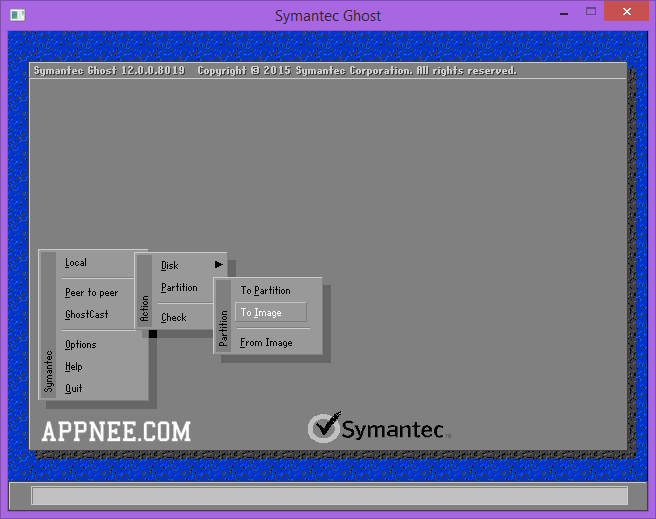
Norton Ghost 12 Dos Version Check
Moving Windows to a Different Hard Disk/RAID Controller Without Reinstalling Overview One of the trends in personal computing these days is the prevelance of more options for hard disks and RAID systems than have been available in the past. As a result, many people want to move towards one of these systems as an upgrade, but at the same time want to avoid the hassle of reinstalling Windows and all applications. This has been exceedingly difficult and in some cases even impossible do to. However, with this guide, you'll be able to perform this task in most cases with most hardware configurations. What You Can and Cannot Do With This Guide This guide is applicable to the person who has Windows currently starting up from one hard disk/hard disk controller combination, and wants to start that same Windows installation up from a different hard disk/hard disk controller on the same computer.
Ghost is a disk cloning and backup tool originally developed by Murray Haszard in 1995 for. A Norton Ghost version for Novell NetWare (called 2.0), released around 1999, supports. Ghost 6.0 requires a separate DOS partition when used with the console. NSR 2.0 has fewer features in comparison to Norton Ghost 12. Game ultraman fighting evolution 3 untuk pch. While Norton Ghost 15.0 uses a powerful disk-cloning technology, it can also be used to simply back up your data as Norton Save & Restore 2.0 used to do. This is because the ability to backup specific files or folders was added in this latest release over the previous one (12.0), making it more ‘consumer-friendly’.
For instance, you may want to upgrade from a single-disk installation of Windows to a RAID installation, or from an IDE drive to a SCSI drive, or from an IDE drive to a native-mode SATA drive. In general, this guide will work for any situation where the mass storage controller that has to be used for Windows startup is going to change. This guide is NOT for adding another drive or controller to an existing system when the Windows installation doesn't move from it's existing controller. That is a much easier task and can be done with standard driver installation and the Disk Management utility in Windows.

This guide is NOT for moving a Windows installation to completely different hardware (like changing your motherboard). There are some procedures posted on the Internet for that already. The guide is NOT for moving a hard drive within a system where the disk controller that is being used either does not change or uses the same drivers as the old one, or where Windows already has built-in drivers for the new controller (like a standard IDE controller). Windows and Mass Storage Controllers Windows treats all mass storage controllers the same way. Whether it's a standard IDE controller, SATA controller, SCSI controller, or RAID controller, Windows has to have a driver for it in order to use it. Once Windows has a driver installed for the controller, Windows can start up from a hard drive attached to that controller as long as the machine's BIOS can use the controller as the boot device. When installing Windows for the first time on a system, most of the time no concern need be given to the mass storage controller, because in the past, 90% of the time, the storage controller is a standard IDE controller which Windows already has drivers for on its installation CD.